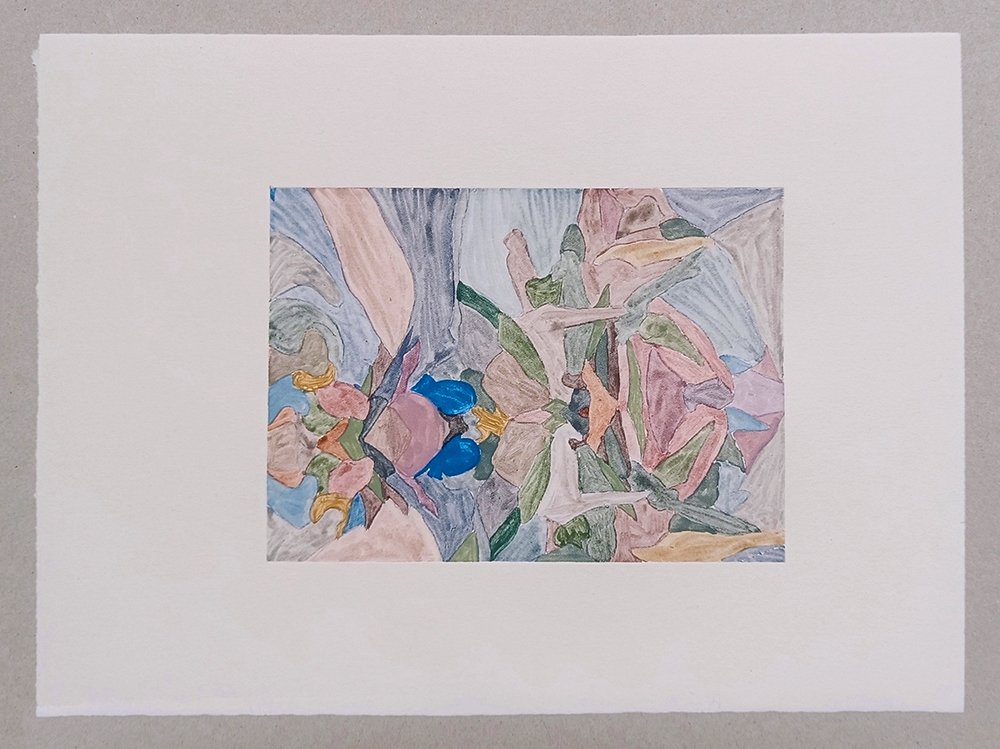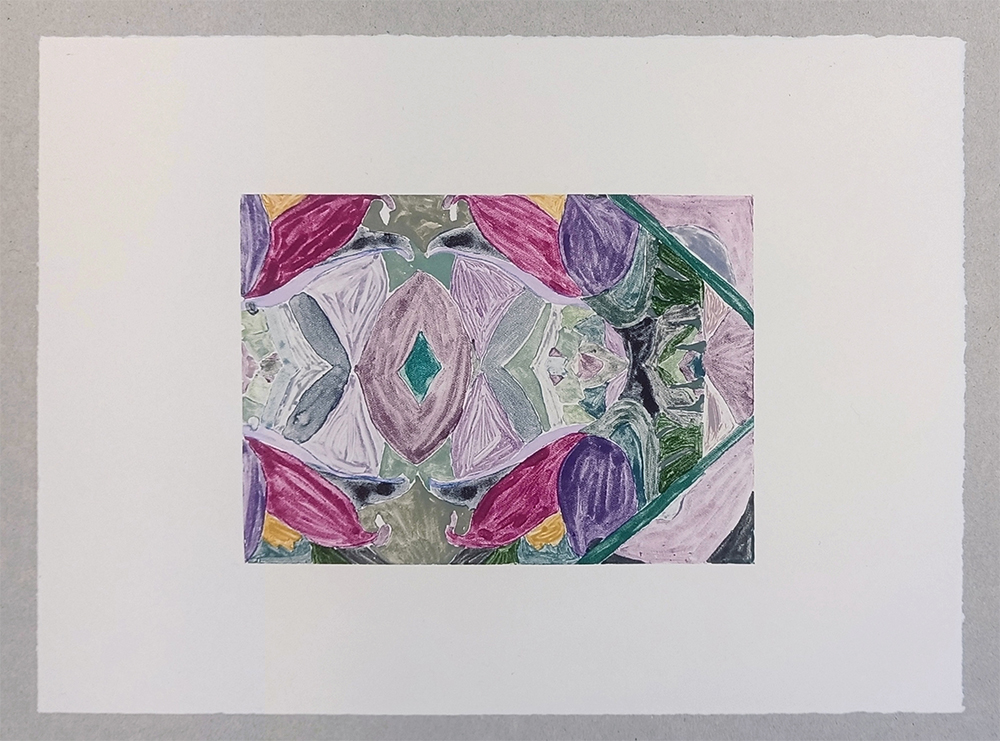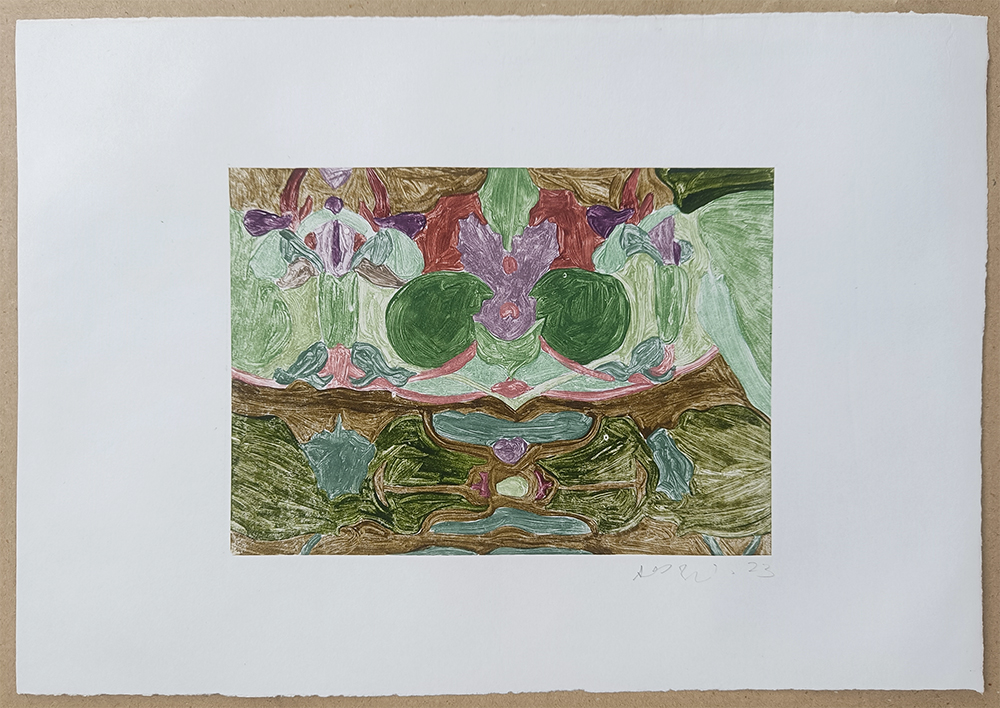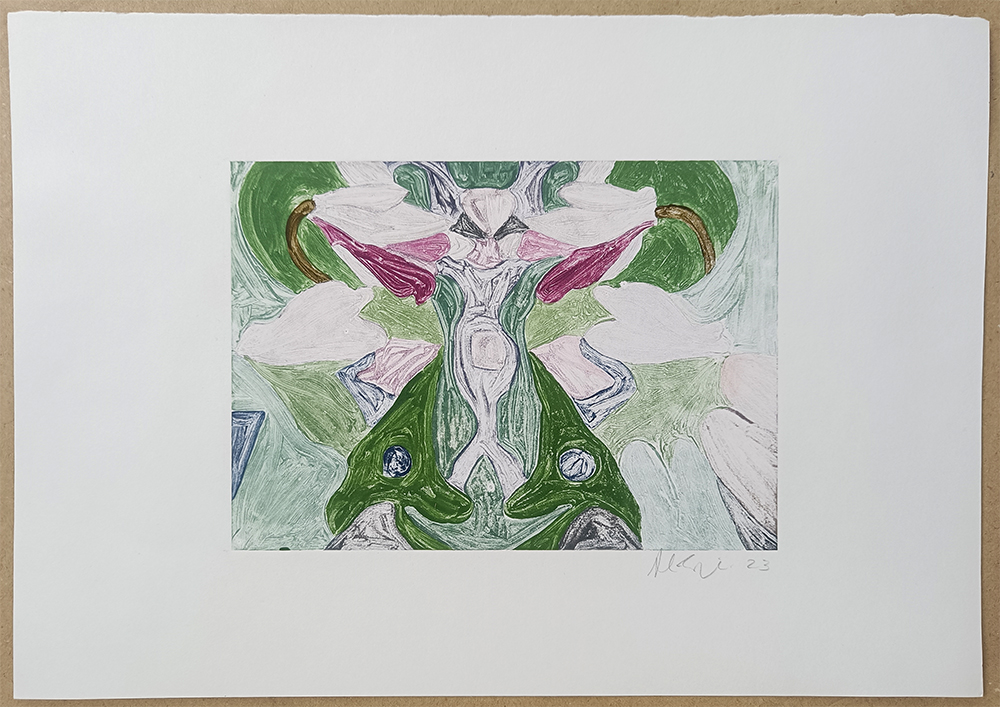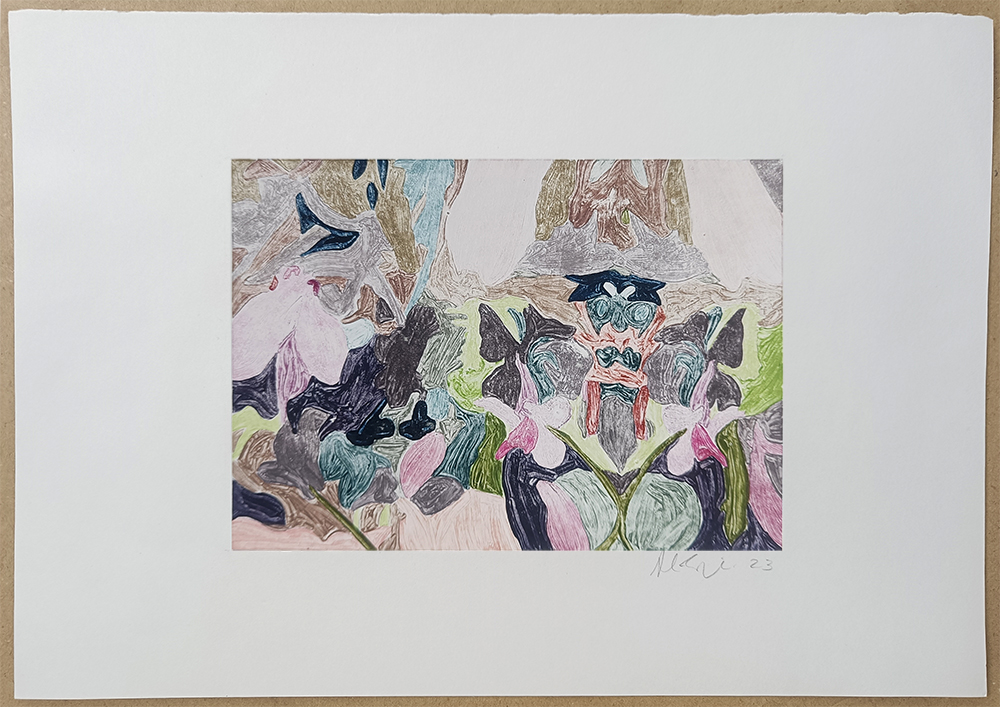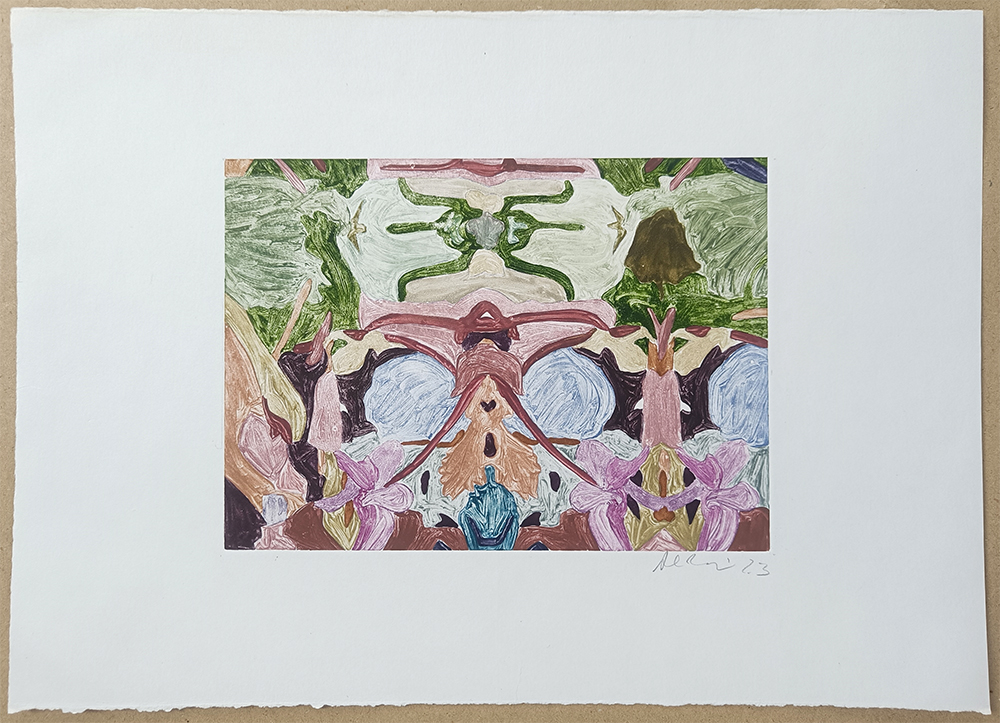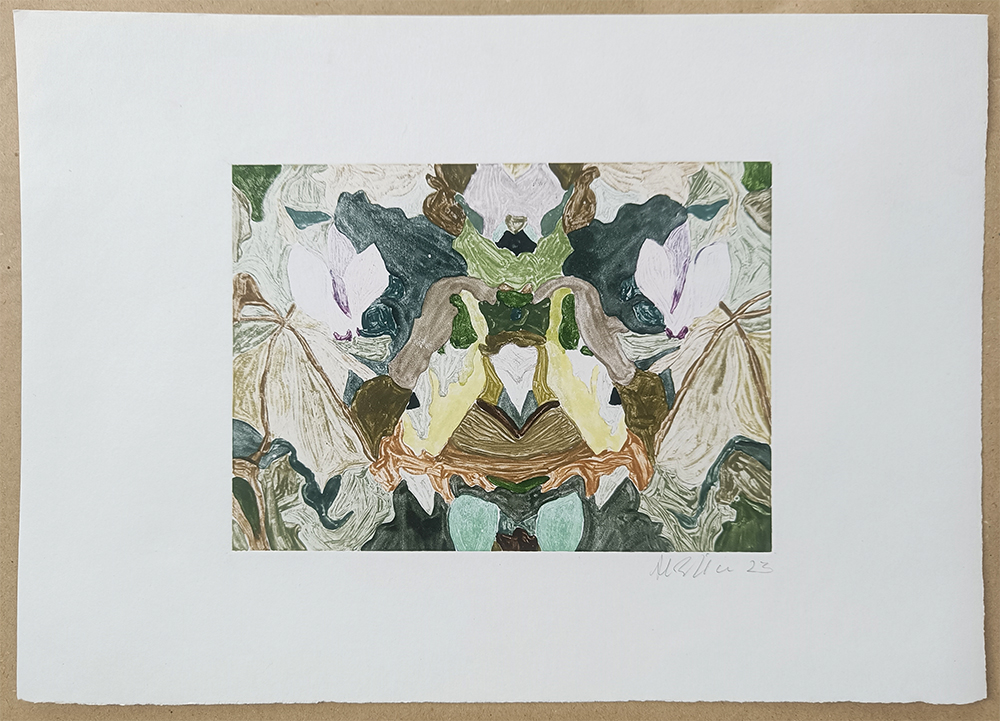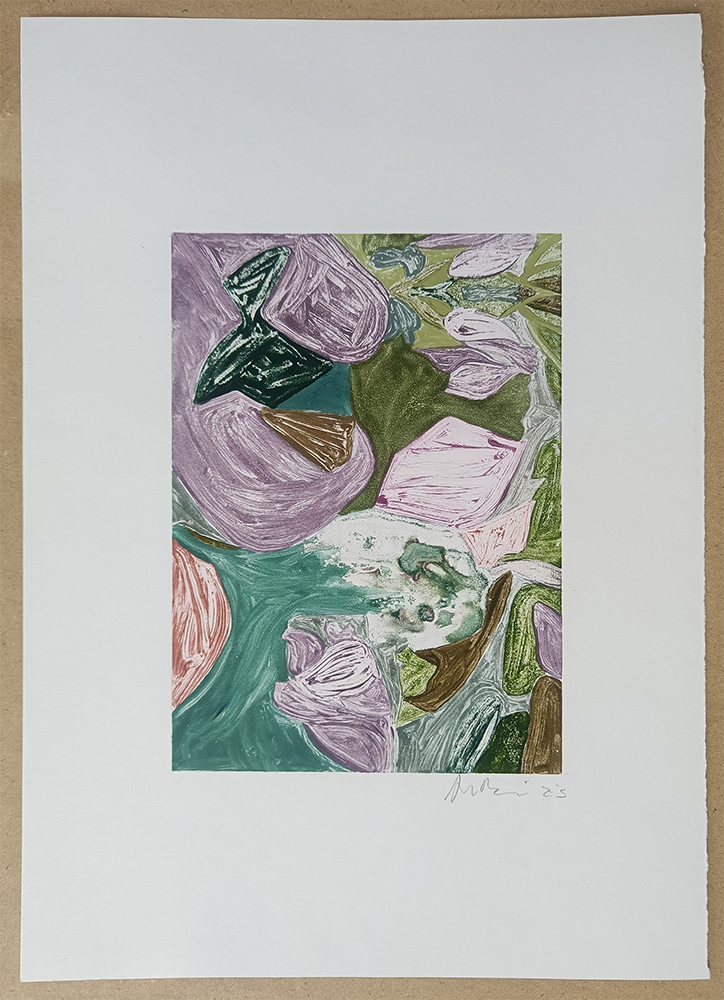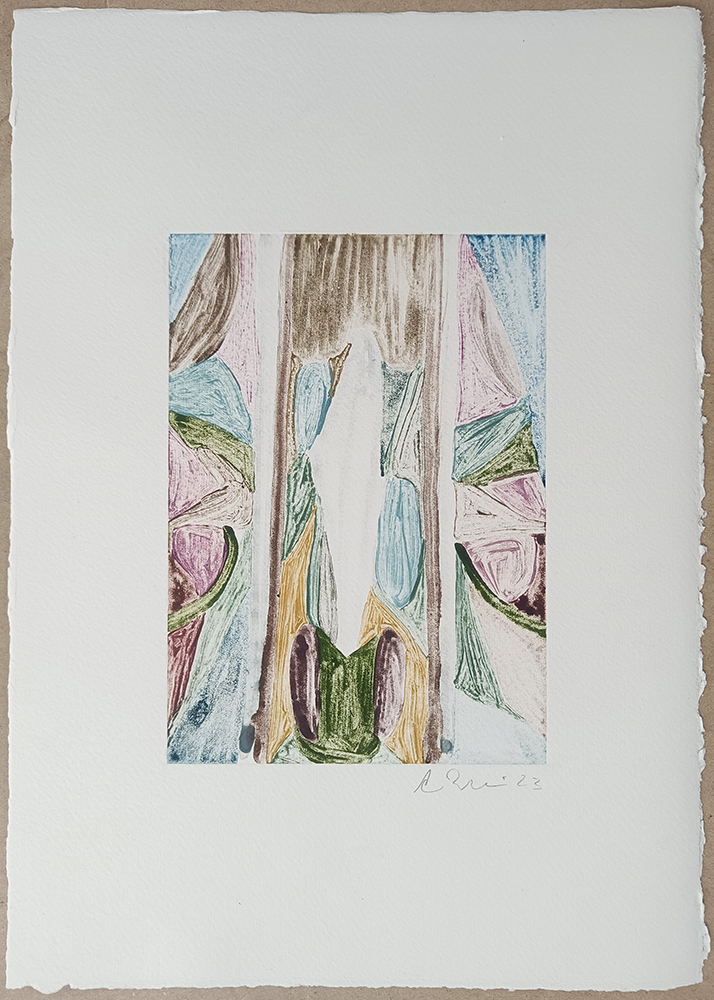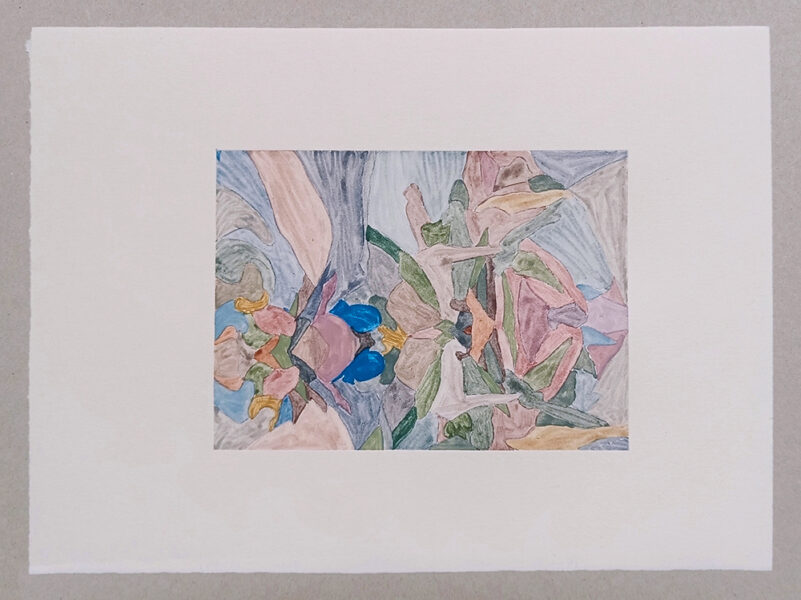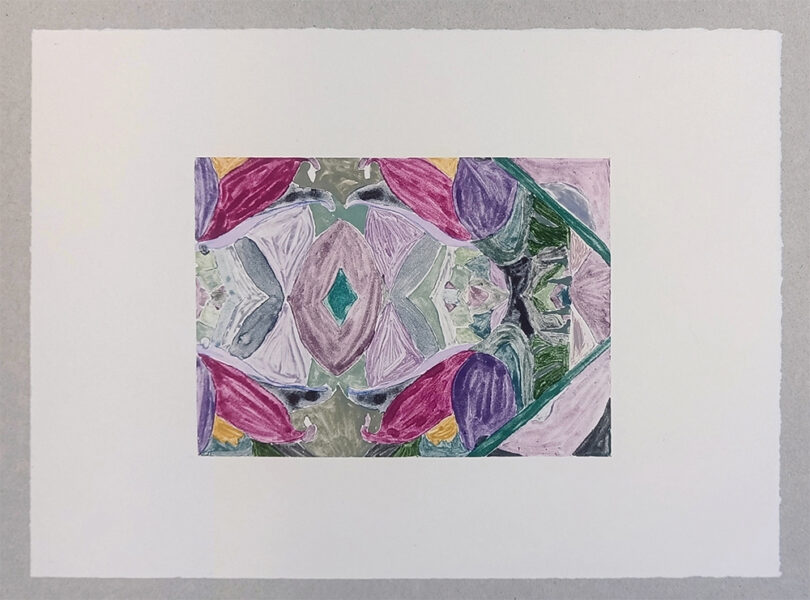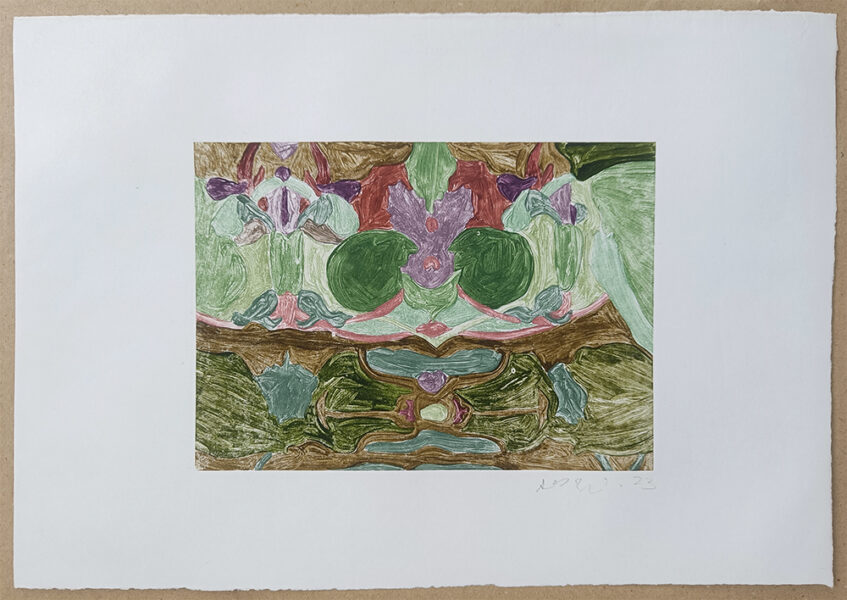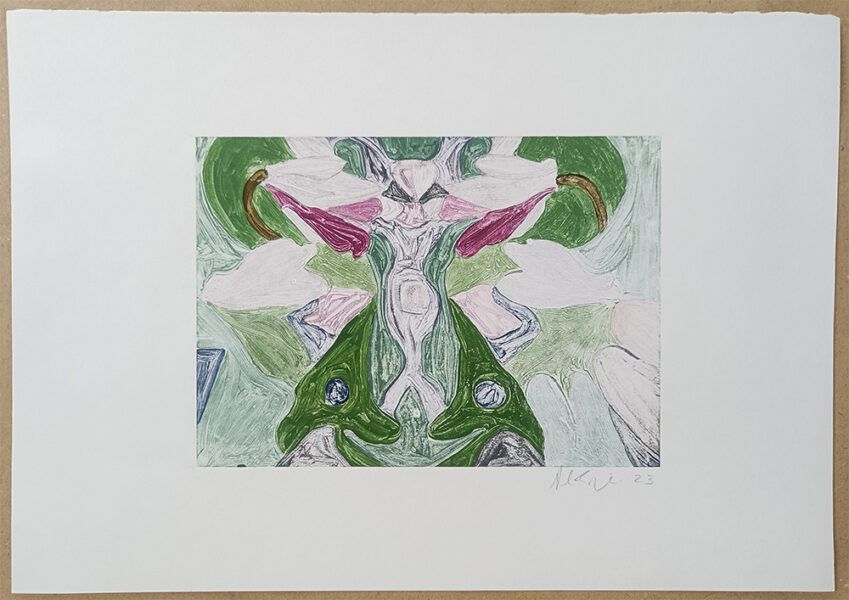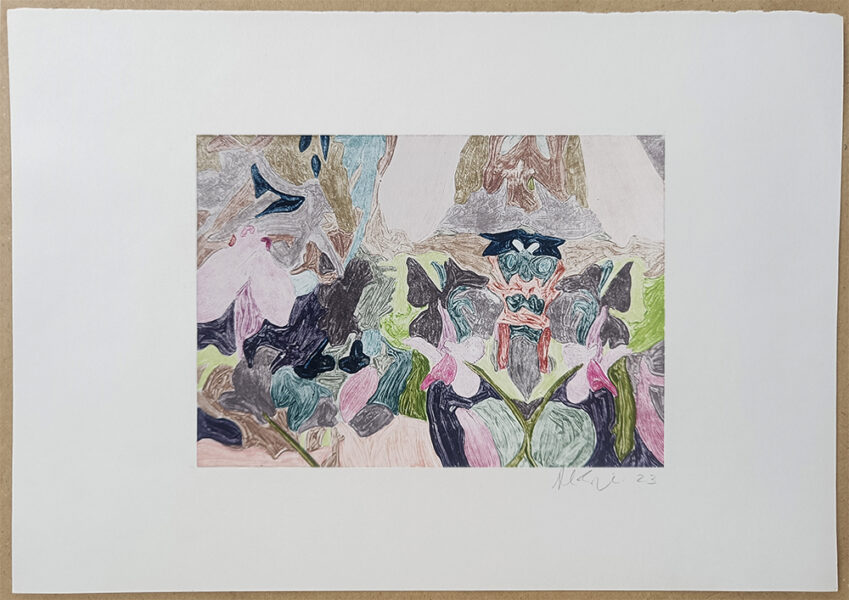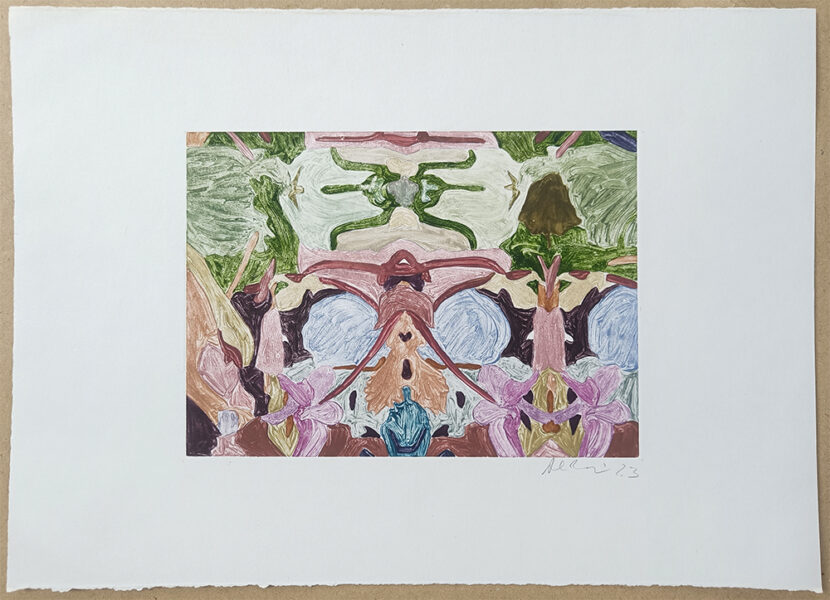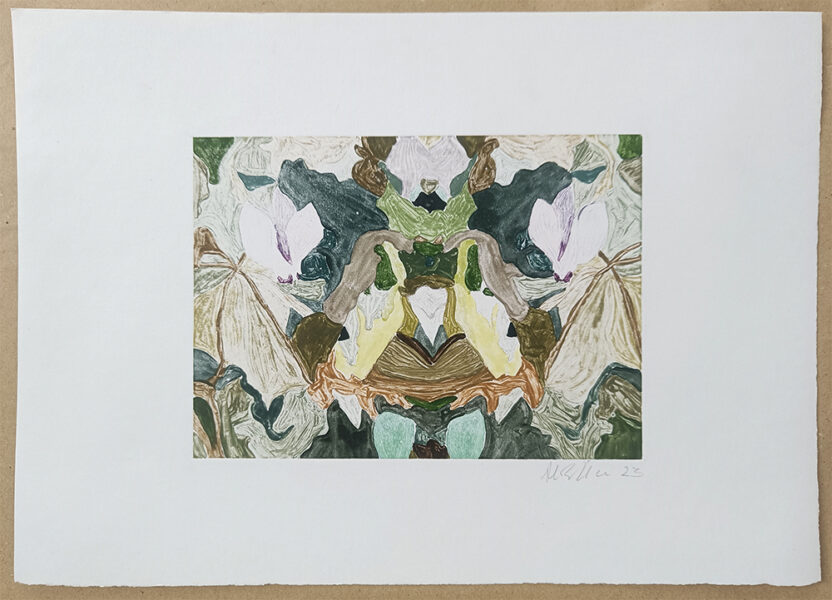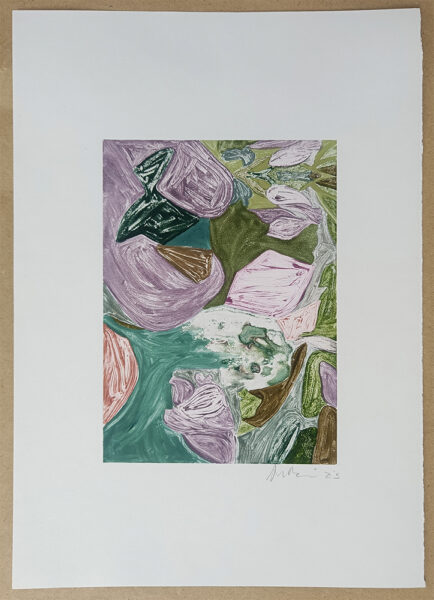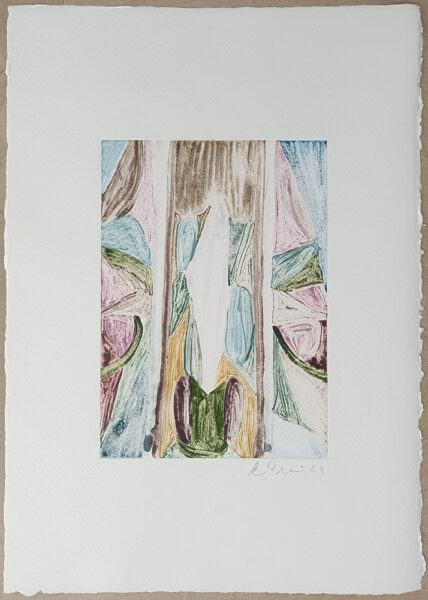AMERIA MARITIMA & CYLAMEN NEAPOLITANUM
The monoprints are made during two recidencies; one at Kliggaarden in Skagen in Denmark and one at San Cantaldo in Scala in the South of Italy. During the stays the focus has been on the site-specific nature based on close studies of local plants. Based on the concept of ‘slow drawing’ the works focus on movements in the plants.
Klitgaarden (lit. “The Dune House”) is a former summer residence of the Danish royal family situated just South of Skagen on the northern tip of Jutland. The house was designed for King Christian X and completed in 1914. It is now owned and run by a trust and serves as a retreat for artists and scientists. The purpose of Klitgaarden is to provide Danish artists and researchers with a quiet, inspirational workplace and to create an environment where the residents can inspire each other. The motives mad at Klitgaarden are inspired by the locally growing plant English Grass or Armeria Maritima, which means ‘by the sea’ (from Celtic and Latin). The plant has slender leaves in a rosette, grows 15–25 cm tall and blooms with pink flowers in May–September.
San Cataldo is an old former Benedictine nunnery, which the Danish Italian traveler Carl Wiinstedt (1875–1932) found and fell for. In 1909 he bought it with the associated vineyard, even though it lay in ruins. Afterwards, Wiinstedt rebuilt parts of the monastery so that it could be inhabited, and during the work he got the idea to make San Cataldo a study home for Danish scientists, artists and ‘other spiritual workers’. The works made at San Cataldo are based on on-site observation in Valle Delle Ferriere of the flower Cyclamen Neapolitanum; named as being a plant from the area of Naples. Cyclamen is derived from the Greek word ‘kiklos’ meaning spiral inspired by the spiral nature of the fertilized flowers.
